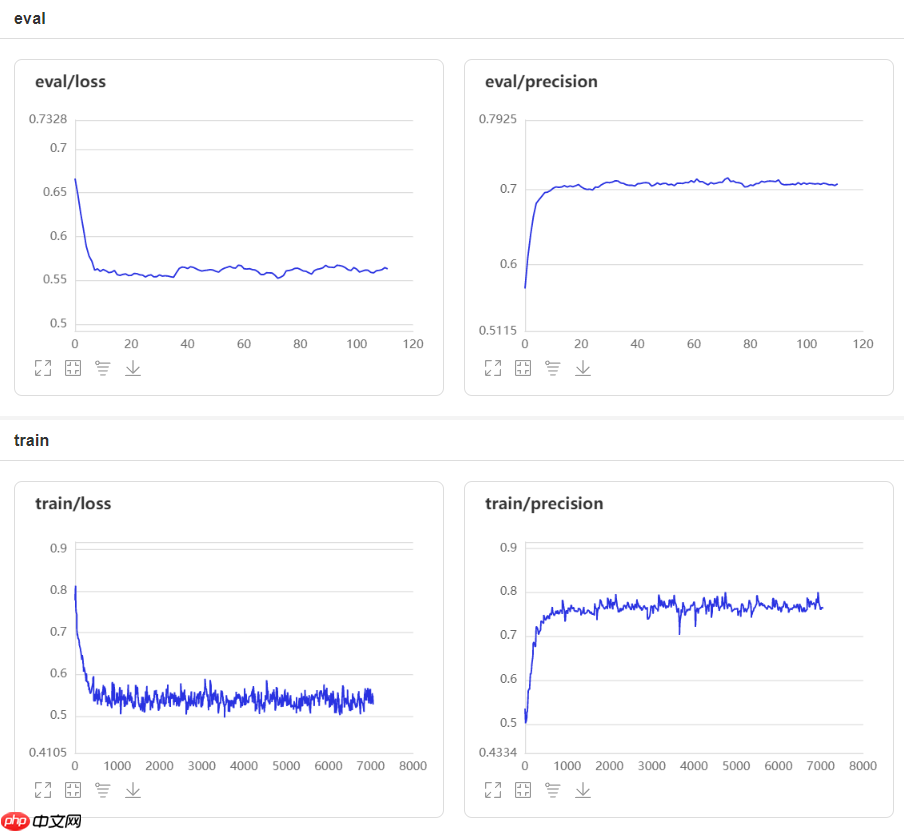【AI达人特训营】高可信度航班延误预测模型及模型可解释性
时间:2025-07-20 作者:游乐小编
随着航空运输市场需求量的不断增加,在规模较大的机场,航班易出现延误。在发生大面积航班延误时,如果没有良好的应对机制,不仅会产生旅客群体性事件,还将带来一系列延误造成的连锁反应。

高可信度航班延误预测模型及模型可解释性

随着航空运输市场需求量的不断增加,在规模较大的机场,航班易出现延误。在发生大面积航班延误时,如果没有良好的应对机制,不仅会产生旅客群体性事件,还将带来一系列延误造成的连锁反应。
本项目基于航班起飞时可以测量的特征,构建MLP模型,以预测航班是否延误。并计算不同特征的重要程度来对模型做出解释,并推断延迟的原因。我们还将使用bootstrapping来估计模型的预测区间。我们利用这些预测区间来建立一种新的模型:在不自信的情况下避免做出预测的模型。该项目所用数据集为2015 Flight Delays and Cancellations数据集的一部分。
关于延误,FAA和BTS将晚点15分钟或以上的航班定义为延误,因此本项目为二分类任务(正点/延误)。
!pip install -qq scikit-lego登录后复制In [138]
# importsimport sysimport numpy as npimport pandas as pdimport matplotlib.pyplot as pltfrom sklearn.utils import resample #bootstrapfrom sklearn.metrics import accuracy_scorefrom sklearn.preprocessing import StandardScalerfrom sklearn.model_selection import train_test_splitfrom sklearn.linear_model import LogisticRegressionfrom sklearn.inspection import permutation_importancefrom sklego.preprocessing import RepeatingBasisFunction #RBFimport paddleimport paddle.nn as nnimport warningswarnings.filterwarnings("ignore",category=DeprecationWarning)登录后复制In [3]# 不知道为什么,切换成GPU各种错误,直接CPU得了# https://blog.csdn.net/qq_37668436/article/details/114336142# 最好是V100 32G或以上,CPU核心多paddle.device.set_device("cpu")print(paddle.device.get_device())登录后复制cpu登录后复制
1. Data
该文件原始形状为(10000,10),本节对数据预处理,并构建适合训练的数据形式。
1.1. Preprocessing
如上文所说,首先需要根据ARRIVAL_DELAY来新建DELAY_OR_NOT列,作为真实标签。接着对非数值的分类变量进行独热码操作,如果有缺失值,处理缺失值,扩展数据,并将数据分割为训练集和测试集(8000/2000)。
其中对于时间的编码,可以有些特殊操作:
时间信息的三种编码方式(RBF)https://scikit-lego.netlify.app/preprocessing.html?highlight=repeatingbasisfunctionhttps://scikit-lego.netlify.app/api/preprocessing.html?highlight=repeatingbasisfunction#sklego.preprocessing.RepeatingBasisFunction.fit使用RBF(radial basis function)对星期和月份编码,可以提升2%左右的准确率。但其中的操作会影响后面的部分,且本文重点不在于性能,因此本次未使用(代码已给出)。
# Load the datadf = pd.read_csv('data/data155027/flights.csv')# Create a variable DELAY_OR_NOT that denotes whether ARRIVAL_DELAY is greater than or equal to 15 minutesdf['DELAY_OR_NOT'] = df['ARRIVAL_DELAY'].apply(lambda x: 1 if x >= 15 else 0)df = df.drop(['ARRIVAL_DELAY'], axis=1)df.head()登录后复制DISTANCE SCHEDULED_TIME MONTH SCHED_DEP_HOUR SCHED_ARR_HOUR \0 2586 342 9 7 15 1 1235 185 5 6 11 2 184 76 4 17 18 3 862 148 7 19 21 4 236 71 3 20 21 FLIGHT_COUNT DAY_OF_WEEK ORIGIN_AIRPORT DESTINATION_AIRPORT DELAY_OR_NOT 0 240 3 SFO JFK 1 1 366 4 LAX DFW 0 2 172 7 BOS LGA 0 3 260 7 IAH DEN 1 4 266 2 LAS LAX 1登录后复制In [5]
# # radial basis functions# rbf_weeks = RepeatingBasisFunction(n_periods=7,# remainder='drop',# column='DAY_OF_WEEK',# input_range=(1,7))# rbf_months = RepeatingBasisFunction(n_periods=12, # remainder='drop', # column='MONTH', # input_range=(1,12)) # rbf_weeks.fit(df)# rbf_months.fit(df)# rbfW = rbf_weeks.transform(df)# rbfM = rbf_months.transform(df)登录后复制In [6]
# use mean values to fill NANdf = df.fillna(df.mean())# one-hot-encode and make certain to drop one column for each predictordf = pd.get_dummies(df, drop_first=True)# # for RBF# X = df.drop(['DELAY_OR_NOT','DAY_OF_WEEK','MONTH'], axis=1)# X = np.concatenate((X, rbfW, rbfM), axis=1)# Split the data into training and test setsX = df.drop(['DELAY_OR_NOT'], axis=1)y = df['DELAY_OR_NOT']X_train, X_test, y_train, y_test = train_test_split(X, y, test_size=0.2, random_state=111)# scale the datascaler = StandardScaler()X_train = scaler.fit_transform(X_train)X_test = scaler.transform(X_test)# shape of the datasetprint(f'The shape of the X_train is {X_train.shape}')print(f'The shape of the y_train is {y_train.shape}')print(f'The shape of the X_test is {X_test.shape}')print(f'The shape of the y_test is {y_test.shape}')登录后复制The shape of the X_train is (8000, 808)The shape of the y_train is (8000,)The shape of the X_test is (2000, 808)The shape of the y_test is (2000,)登录后复制
1.2. Generate Dataset
定义Dataset来适配该数据集,接着使用DataLoader将数据集化成batch。
In [14]class FlightDataset(paddle.io.Dataset): """ 步骤一:继承paddle.io.Dataset类 """ def __init__(self, data, label): """ 步骤二:传入data和label """ super(FlightDataset, self).__init__() self.num_samples = data.shape[0] self.data = data self.label = label def __getitem__(self, index): """ 步骤三:实现__getitem__方法,定义指定index时如何获取数据,并返回单条数据(训练数据,对应的标签) """ # row = np.array(self.data[index]).astype('float32') # predic = np.array(self.label[index]).astype('float32') # return row, predic return self.data[index], self.label[index] def __len__(self): """ 步骤四:实现__len__方法,返回数据集总数目 """ return self.num_samples登录后复制In [15]# to_tensorX_train_tensor = paddle.to_tensor(X_train, dtype='float32') y_train_tensor = paddle.to_tensor(np.array(y_train), dtype='float32') X_test_tensor = paddle.to_tensor(X_test, dtype='float32') y_test_tensor = paddle.to_tensor(np.array(y_test), dtype='float32') # 数据导入train_dataset = FlightDataset(X_train_tensor, y_train_tensor)test_dataset = FlightDataset(X_test_tensor, y_test_tensor)# 实例化数据读取器batch_size = 128train_dataloader = paddle.io.DataLoader(train_dataset, shuffle=True, batch_size=batch_size, num_workers=2)test_dataloader = paddle.io.DataLoader(test_dataset, shuffle=False, batch_size=batch_size, num_workers=2)登录后复制
2. Baseline Model
本项目的Baseline模型是简单的MLP加上一些正则化方式,模型结构见下文summary。
模型最终测试精度为72%。从下图中可以看出模型已存在过拟合现象,因此增加正则化或许能提高模型性能,在此不做深究。

# model parametersn_input = X_train.shape[1]n_hidden = 15n_output = 1# define the modelnn_model = nn.Sequential( nn.Linear(n_input, n_hidden, weight_attr=nn.initializer.KaimingNormal()), nn.ReLU(), nn.Dropout(0.5), nn.Linear(n_hidden, n_hidden, weight_attr=nn.initializer.KaimingNormal()), nn.ReLU(), nn.Linear(n_hidden, n_output), nn.Sigmoid())登录后复制In [17]
# model summarypaddle.summary(nn_model, (1, 3, 808))登录后复制
--------------------------------------------------------------------------- Layer (type) Input Shape Output Shape Param # =========================================================================== Linear-4 [[1, 3, 808]] [1, 3, 15] 12,135 ReLU-3 [[1, 3, 15]] [1, 3, 15] 0 Dropout-2 [[1, 3, 15]] [1, 3, 15] 0 Linear-5 [[1, 3, 15]] [1, 3, 15] 240 ReLU-4 [[1, 3, 15]] [1, 3, 15] 0 Linear-6 [[1, 3, 15]] [1, 3, 1] 16 Sigmoid-2 [[1, 3, 1]] [1, 3, 1] 0 ===========================================================================Total params: 12,391Trainable params: 12,391Non-trainable params: 0---------------------------------------------------------------------------Input size (MB): 0.01Forward/backward pass size (MB): 0.00Params size (MB): 0.05Estimated Total Size (MB): 0.06---------------------------------------------------------------------------登录后复制
{'total_params': 12391, 'trainable_params': 12391}登录后复制In [ ]# compile it and run it# compile the modelmodel = paddle.Model(nn_model)learning_rate = 0.001clip = paddle.nn.ClipGradByGlobalNorm(clip_norm=1.0)opt = paddle.optimizer.Adam(learning_rate=learning_rate, parameters=model.parameters(), grad_clip=clip, weight_decay=0.05)model.prepare(optimizer=opt, loss=paddle.nn.BCELoss(), metrics=paddle.metric.Precision())# trainearly_stop = paddle.callbacks.EarlyStopping(monitor='precision', mode='max', patience=50, verbose=0, save_best_model=True)visualdl = paddle.callbacks.VisualDL('log/baseline')model.fit(train_dataloader, test_dataloader, epochs=500, verbose=1, callbacks=[early_stop,visualdl], save_dir='checkpoint/baseline', save_freq=50)登录后复制In [25]# evaluate baseline modelbest_model = paddle.Model(nn_model)best_model.load('checkpoint/baseline/best_model.pdparams')learning_rate = 0.001clip = paddle.nn.ClipGradByGlobalNorm(clip_norm=1.0)opt = paddle.optimizer.Adam(learning_rate=learning_rate, parameters=best_model.parameters(), grad_clip=clip, weight_decay=0.1)best_model.prepare(optimizer=opt, loss=paddle.nn.BCELoss(), metrics=paddle.metric.Precision())best_model.evaluate(test_dataloader, verbose=0)登录后复制{'loss': [0.5625631], 'precision': 0.7204968944099379}登录后复制3. Model Interpretation
这到了本项目第一个重点,如何对模型做出解释?
3.1. Feature Importance
第一个方法
为了解释最终的baseline model,我们将首先使用一个我们知道如何解释的“代理模型”,并用我们的baseline模型的预测结果上训练它。
为此我们需要修改我们的训练集。首先,为训练集生成一组baseline model的预测结果。对于“代理模型”的数据集:(a)X与baseline训练集的X相同,(b)将y替换为baseline model对训练集的预测结果。
接下来,用修改后的训练数据集拟合一个logistics regression model(代理模型)。打印代理模型的测试精度以确认它与我们的baseline model测试精度相似。为了达到类似的精度,可能需要调整LogisticRegression中的C。
最后使用sklearn的permutation_importance函数来计算特征的重要性。并生成一个条形图,展示使用permutation_importance得到的前10个最重要的预测因子的相对重要性。
Resource:
permutation_importance 1permutation_importance 2In [21]# generate logreg dataset# Convert probabilities into labels# 切记不要用train_dataloader来predict,因为有shuffley_train_hat = best_model.predict(X_train_tensor, stack_outputs=True, verbose=0)[0]y_train_logreg = np.round(y_train_hat).ravel()# Fit the logistic regression modellogreg = LogisticRegression(penalty='l2', max_iter=1000)logreg.fit(X_train, y_train_logreg)# Print the logreg test accuracyy_test_logreg_hat = logreg.predict(X_test)print("logreg_model_test_acc:", accuracy_score(y_test_logreg_hat, y_test))登录后复制logreg_model_test_acc: 0.7265登录后复制In [23]
# 需要时间较长(4核需3分钟)# compute the feature importances use permutation_importanceperm_results = permutation_importance(logreg, X_test, y_test, n_jobs=1)# calculate relative importance of top 10 predictors in descending orderrelimp10 = np.flip(np.sort(perm_results.importances_mean)[-10:])/perm_results.importances_mean.max()# identify indices of top 10 predictors in descending orderrelimp10_idx = np.flip(np.argsort(perm_results.importances_mean)[-10:])# identify top 10 predictor names based on sorted top 10 indicesrelimp10_preds = [X.columns[i] for i in relimp10_idx]登录后复制In [40]
# plot results of top 10 predictorsfig, ax = plt.subplots(figsize=(9, 6))plt.title( "Top 10 predictors by relative importance\n" "as identfied using \"permutation_importance\"", fontsize=16,)ax.barh(relimp10_preds[::-1], relimp10[::-1], alpha=0.5)ax.tick_params(labelsize=12)ax.set_xlabel("relative feature importance", fontsize=12)ax.grid(':', alpha=0.4)plt.tight_layout()plt.show()登录后复制登录后复制登录后复制
3.2. Visualize Important Features
第二种方法
另一种解释的方法是将数据集中除选中的特征外,其他特征全部设置为平均值,以此来观察选中变量对预测结果的影响。需要注意的是,我们最好从上面发现的最重要的特征中选择(SCHED_DEP_HOUR, FLIGHT_COUNT, SCHED_ARR_HOUR, DISTANCE)。为了便于解释,以下所有图的预测因子按其原始比例显示。
In [53]# examining the response as a function of any of the predictorsdef predictors_examining_14(examining_predictors, NN_model): ''' input: examining_predictors: list of strings, the names of the predictors to examine NN_model: the trained model output: None(just print the plot) ''' # set all predictors to their means of scaled values except the examining variables # get the original data X_train, X_test, y_train, y_test = train_test_split(X, y, test_size=0.2, random_state=111) # get the column index of the examining variables examining_predictors_index = X_train.columns.get_indexer(examining_predictors) # scale the data and get the mean of the scaled data scaler_temp = StandardScaler() X_train_temp = scaler_temp.fit_transform(X_train) X_train_final = X_train_temp.copy() X_train_final[:]= X_train_temp.mean(axis=0) # keep the examing variables to their scaled values X_train_final[:,examining_predictors_index] = X_train_temp[:,examining_predictors_index] X_train_final = paddle.to_tensor(X_train_final, dtype='float32') # predict the probability of delay with the new data y_train_hat = NN_model.predict(X_train_final, verbose=0) # plot the predicted probabilities of delay vs. examining predictors on the training set. # set the first axis fig, ax1 = plt.subplots(figsize=(9, 6)) # ax1.set_title('Predicted Probability of Delay vs. '+' & '.join(examining_predictors), fontsize=24) ax1.set_title( "\"Model\" training predictions\nby {}\n"\ "with all other predictors are held constant at their means" .format( ' & '.join(examining_predictors), ), fontsize=15, ) ax1.set_xlabel('Predicted Probability of Delay', fontsize=16) ax1.set_ylabel('Original '+examining_predictors[0], color='b', fontsize=16) s1 = ax1.scatter(y_train_hat, X_train[examining_predictors[0]], c='b', marker='o', label=examining_predictors[0]) ax1.tick_params(axis='y', labelcolor='b') # set the second axis(if have more than one examining variables) if len(examining_predictors) == 1: ax1.legend(loc=0, fontsize=12) plt.show() else: # Create a second Y-axis that shares the X-axis ax2 = ax1.twinx() ax2.set_ylabel('Original '+examining_predictors[1], color='r', fontsize=16) s2 = ax2.scatter(y_train_hat, X_train[examining_predictors[1]], c='r', marker='o', label=examining_predictors[1]) ax2.tick_params(axis='y', labelcolor='r') # Add the legend to the plot sca = [s1,s2] labels = [lable.get_label() for lable in sca] plt.legend(sca, labels,loc = 2, fontsize=12) plt.show()登录后复制In [54]# except SCHED_DEP_HOUR (3.2.1)predictors_examining_14(['SCHED_DEP_HOUR'], best_model)登录后复制
登录后复制登录后复制
通过保持所有其他变量不变,我们可以观察到SCHED_DEP_HOUR对模型预测结果的影响。可以看到,随着一天中预定起飞时间的增加,航班延误的预测概率也会增加。这一发现有助于说明了该变量在我们的模型中的影响。然而,这一发现也提出了一些问题,即其他哪些混杂因素可能导致这一预测的影响。下面将探究变量之间的影响。
# except SCHED_DEP_HOUR and FLIGHT_COUNT (3.2.2)predictors_examining_14(['SCHED_DEP_HOUR','FLIGHT_COUNT'], best_model)登录后复制
登录后复制登录后复制登录后复制In [56]
# except SCHED_DEP_HOUR and SCHED_ARR_HOUR (3.2.3)predictors_examining_14(['SCHED_DEP_HOUR','SCHED_ARR_HOUR'], best_model)登录后复制
登录后复制登录后复制登录后复制In [57]
# except SCHED_DEP_HOUR and DISTANCE (3.2.4)predictors_examining_14(['SCHED_DEP_HOUR','DISTANCE'], best_model)登录后复制
登录后复制登录后复制登录后复制
上面三张图最明显的是,"SCHED_DEP_HOUR"对预测结果的影响显著大于另一个对比的变量,这与上面得到的feature importance结果一致。表明模型预测结果主要受该变量影响。
在3.2.2中,每天的航班数量可以集中在0-300的范围内,延误的概率随着航班数量的增加而略有增加。由此可以推断出,繁忙的机场会增加延误的概率。
在3.2.3中,随着到达时间从0增加到24,延误概率略有增加,需要注意的是,右下角的点是第二天到达的(延误概率高主要是受前一天出发时间晚的影响)。
在3.2.4中,我们可以看到,飞行距离集中在0到3000英里之间,随着飞行距离的增加,延误概率也略有增加。
4. Bagging (bootstrap-aggregated)
这是该项目的第二个重点
这里使用与baseline model相同的网络架构(层、节点、激活等),使用bootstrap创建多个训练集,并为每个bootstrap数据集拟合一个单独的MLP模型。预测每个模型的测试数据的输出。
Resource:
https://www.zhihu.com/column/p/262211315https://blog.csdn.net/dmsgames/article/details/81943206In [60]
def progressbar(n_step, n_total): """Prints self-updating progress bar to stdout to track for-loop progress There are entire 3rd-party libraries dedicated to custom progress-bars. A simple function like this is often more than enough to get the job done. :param n_total: total number of expected for-loop iterations :type n_total: int :param n_step: current iteration number, starting at 0 :type n_step: int .. example:: for i in range(n_iterations): progressbar(i, n_iterations) .. source: This function is a simplified version of code found here: https://stackoverflow.com/questions/3160699/python-progress-bar/15860757#15860757 """ n_step = n_step + 1 barlen = 50 progress = n_step / n_total block = int(round(barlen * progress)) status = "" if n_step == n_total: status = "Done...\r\n\n" text = "\r [{0}] {1}/{2} {3}".format( "=" * block + "-" * (barlen - block), n_step, n_total, status, ) sys.stdout.write(text) sys.stdout.flush()登录后复制In [62]# build and compile the modeldef buildModel(learning_rate = 0.001): ''' input: learning_rate: float, the learning rate of the model output: model: the model ''' # build NN model # model parameters n_input = X_train.shape[1] n_hidden = 15 n_output = 1 # define the model nn_model = nn.Sequential( nn.Linear(n_input, n_hidden, weight_attr=nn.initializer.KaimingNormal()), nn.ReLU(), nn.Dropout(0.5), nn.Linear(n_hidden, n_hidden, weight_attr=nn.initializer.KaimingNormal()), nn.ReLU(), nn.Linear(n_hidden, n_output), nn.Sigmoid() ) # compile the model model = paddle.Model(nn_model) clip = paddle.nn.ClipGradByGlobalNorm(clip_norm=1.0) opt = paddle.optimizer.Adam(learning_rate=learning_rate, parameters=model.parameters(), grad_clip=clip, weight_decay=0.05) model.prepare(optimizer=opt, loss=paddle.nn.BCELoss(), metrics=paddle.metric.Precision()) return model登录后复制In [ ]
%%time# 需要时间较长(4核需xx分钟)# bootstraps不应过小,否则体现不出效果# bootstraps数量与训练时间成正比,可以通过减小bootstraps缩短学习时间# Bootstrap and train your networks and get predictions on fixed X test databootstraps = 100epochs = 500batch_size = 256learning_rate = 0.001boot_models = []for i in range(bootstraps): # progress bar progressbar(i, bootstraps) # build, compile and train the model boot_X_train, boot_y_train = resample(X_train, y_train, replace=True, n_samples=int(X_train.shape[0])) boot_model = buildModel(learning_rate=learning_rate) # generate resample dataset boot_X_train = paddle.to_tensor(boot_X_train, dtype='float32') boot_y_train = paddle.to_tensor(np.array(boot_y_train), dtype='float32') boot_train_dataset = FlightDataset(boot_X_train, boot_y_train) boot_train_dataloader = paddle.io.DataLoader(boot_train_dataset, shuffle=True, batch_size=256, num_workers=4) early_stop = paddle.callbacks.EarlyStopping(monitor='precision', mode='max', patience=50, verbose=0, save_best_model=True) boot_model.fit(boot_train_dataloader, test_dataloader, epochs=epochs, verbose=0, callbacks=[early_stop]) # save model boot_models.append(boot_model)登录后复制
4.1. Confidence Interval
随机选择6个测试观测数据,在6个子图上绘制预测概率的分布(即n个bootstrapped probability),在每个子图中标记95%CI边界,在每个子图的标题中包含每个观测数据的实际类别,以便于参考。
根据下面显示的6个图可以观察到一些有趣的东西,大部分情况下,无论使用的是何种bootstrap数据集,该模型都可以"自信"的预测出结果。这意味着,大多数概率预测都处于产生“正确”的预测(p= 0.5的一侧)。我们也可以观察到其中模型预测错误的情况,也非常"自信"。其他的测试预测似乎远没有那么确定,在这些情况下,bootstrap预测的分布更加分散。
In [147]# ramdomly select 10 test observationsboot_X_test, boot_y_test = resample(X_test, y_test, replace=0, n_samples=6)boot_y_hat = np.zeros((bootstraps, boot_X_test.shape[0]))for i in range(bootstraps): boot_y_hat[i] = boot_models[i].predict(paddle.to_tensor(boot_X_test, dtype='float32') , stack_outputs=True, verbose=0)[0].ravel()boot_y_hat = boot_y_hat.T登录后复制In [148]
# plot the distribution of predicted probabilities with the 95% CI bounds clearly marked and reported in each subplotfig, ax = plt.subplots(6, 1, figsize=(9, 25))for i in range(6): ax[i].set_title(f'The distribution of {bootstraps} bootstrapped probabilites with the 95% CI bounds , sample {i}, True label: {boot_y_test.iloc[i]}') ax[i].hist(boot_y_hat[i], bins=30, range=(0, 1), color='blue') ax[i].axvline(boot_y_hat[i].mean(), color='k', linestyle='dashed', linewidth=2, label='Mean') ax[i].axvspan(np.percentile(boot_y_hat[i], 2.5), np.percentile(boot_y_hat[i], 97.5), color='red', alpha=0.3, label='95% CI') ax[i].set_xlabel('Predicted Probability of Delay') ax[i].set_ylabel('Frequency') ax[i].legend()fig.tight_layout()plt.show()登录后复制登录后复制
4.2. Abstain Model
使用从上面的bootstrap样本中获得的预测的概率分布,我们可以评估我们的bagging(即bootstrap-aggregated)预测对每个测试观察的“重要性”。为了实现这一点,首先计算跨越阈值p=0.5的bootstrapped的比例。我们称这个比例为PPR(Posterior Prediction Ratio)。当PPR=0时,该条数据(一行数据)的所有bootstrap概率都在p=0.5的同一侧。同样地,当PPR=0.5时,该条数据(一行数据)的bootstrap预测的一半是y=0,另一半是y=1。在计算所有测试观察值后,应该有 2000个PPR值(即每条数据一个PPR值)。
接下来,为了获得更准确的预测,我们可以创建一个Abstain Model,如果未满足某个定义的显著性阈值(即最大PPR值),该模型将不会对某一行数据进行预测。
最后,绘制出abstain bagging model中未弃权的测试观察结果的比例(即有预测结果的比例),以及预测准确的比较。
最后的图中显示,随着PPR阈值的减小(更高可信度),有预测结果的比例有明显下降。反之,预测比例上升。我们还可以看到,在更低的PPR阈值下,我们的分类准确率越来越高。而我们abstain bagging model所能做到的最好的情况是在牺牲50%的可用预测的基础上,将测试精度增加约10个额外点。
In [149]# predict all test data with the bootstrapped modelsboot_y_hat_all = np.zeros((bootstraps, X_test.shape[0]))for i in range(bootstraps): # progress bar progressbar(i, bootstraps) # predict boot_y_hat_all[i] = boot_models[i].predict(X_test_tensor, stack_outputs=True, verbose=0)[0].ravel()boot_y_hat_all = boot_y_hat_all.T# calculate posterior prediction ratioboot_y_hat_label = np.round(boot_y_hat_all)PPR = (boot_y_hat_label==0).mean(axis=1)登录后复制
[==================================================] 100/100 Done...登录后复制In [150]
def abstain_bagging_model(threshold=0.5): ''' input: threshold: float, max is 0.5, when it is 0 the bagging model have 100% confidence output: The rest of the samples, accuracy and proportion of the samples that not abstained ''' # delete the abstained samples indexes = np.where(abs(PPR-0.5) >= abs(threshold-0.5)) X, y = X_test[indexes], y_test.iloc[indexes] # calculate the proportion of the samples that not abstained proportion = X.shape[0]/X_test.shape[0] # calculate the accuracy acc = ((np.round(boot_y_hat_all[indexes]).sum(axis=1)>(len(boot_models)/2))==y_test.iloc[indexes]).mean() return X, y, acc, proportion登录后复制In [151]
# test accuracy and proportion of test observations not abstained for abstain bagging modeldef plot_acc_proportion_16(start, end, step): ''' input: start: the start of the range end: the end of the range step: the step of the range output: plot the accuracy and proportion of the samples that not abstained ''' # generate the data for the next part arr = np.arange(start, end, step) accs=[] pros=[] for i in arr: _, _, acc, proportion = abstain_bagging_model(threshold=i) accs.append(acc) pros.append(proportion) # plot accuracies and proportion of test observations not abstained for abstain bagging model # plot accuracies # set the first axis fig16, ax16 = plt.subplots(figsize=(14,7)) ax16.set_title('PPR Threshold vs. Accuracy and Rest Propotion of Test Observation', fontsize=24) ax16.set_xlabel('Posterior Prediction Ratio Threshlod', fontsize=16) ax16.set_ylabel('Accuracy of abstain bagging model', color='b', fontsize=16) s1 = ax16.plot(arr, accs, c='b', label='Accuracy') ax16.tick_params(axis='y', labelcolor='b') ax16.legend(loc=0) # plot the proportion of test observations not abstained # Create a second Y-axis that shares the X-axis ax2 = ax16.twinx() ax2.set_ylabel('Rest ratio of test observation', color='r', fontsize=16) s2 = ax2.plot(arr, pros, c='r', label='Rest Propotion') ax2.tick_params(axis='y', labelcolor='r') ax2.legend(loc=0) # # fig16.tight_layout() plt.show()登录后复制In [152]# test accuracy and proportion of test observations not abstained for abstain bagging model when the threshold is increasedplot_acc_proportion_16(0, 0.51, 0.01)登录后复制
登录后复制
5. Conclusion
本项目利用有关航班的数据,通过简单的MLP模型,来预测航班是否延误。借助相关库计算每个特征的重要性,来对模型做出解释,并推断影响延迟的主要原因。最后借助abstain bagging model来得到一个高可信度的预测模型。
在CV和NLP项目刷屏的今天,该项目却"大费周章"的做着二分类问题,甚至也不是为了提高精度。单纯的希望利用简单的模型来完成一个baseline,更重要的是通过解释模型来寻找解释深度学习效果的方法。
小编推荐:
相关攻略
更多 - 豆包AI如何实现自动化部署?CI/CD流程优化方案 07.20
- 新手必看:豆包AI深度集成DeepSeek的完整设置指南 07.20
- LIC2022-知识对话任务基线系统 07.20
- 【AI达人创造营第二期】基于jetsonnano部署的手势乐器--模型部署 07.20
- 助力自动驾驶:行车检测和车道线分割 07.20
- WindowsDefender误报文件为病毒怎么处理 07.20
- 豆包AI编程操作教程 豆包AI自动编程指南 07.20
- 【一键下载安装】Paddle/环境 & Paddle套件全家桶【多平台】 07.20
热门推荐
更多 热门文章
更多 -

- 神角技巧试炼岛高级宝箱在什么位置
-
2021-11-05 11:52
手游攻略
-

- 王者荣耀音乐扭蛋机活动内容奖励详解
-
2021-11-19 18:38
手游攻略
-

- 坎公骑冠剑11
-
2021-10-31 23:18
手游攻略
-

- 原神卡肉是什么意思
-
2022-06-03 14:46
游戏资讯
-

- 《臭作》之100%全完整攻略
-
2025-06-28 12:37
单机攻略
























